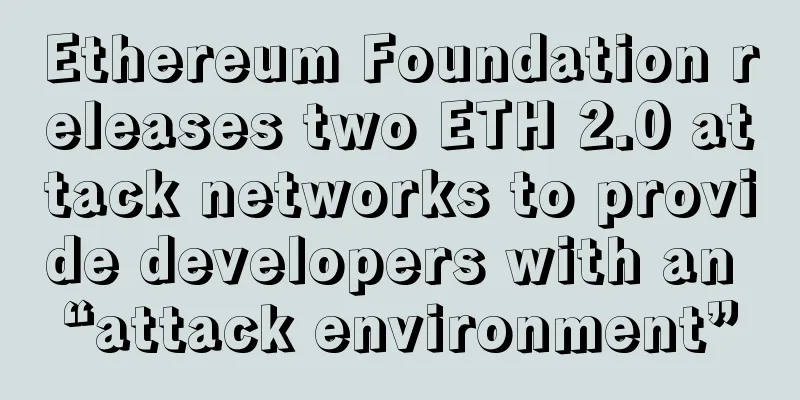Ethereum Foundation releases two ETH 2.0 attack networks to provide developers with an “attack environment”

|
The Ethereum Foundation has released a public “attack net” for Ethereum 2.0 based on an existing stable client. These networks are designed to provide security researchers with a sandbox environment where they can try to disrupt the Ethereum 2.0 network by exploiting potential problems in the client. Currently, there are two "beta-0" attack networks based on the Lighthouse and Prysm clients, built by Sigma Prime and Prysmatic Labs respectively. According to an announcement published on Monday, the attacknet is a “real network,” albeit with some limitations. Notably, only four nodes with 128 validators have been deployed to the network, while Ethereum 2.0 is expected to have thousands of nodes. Deposits are also not enabled, meaning hackers would need to “attempt a non-validator based attack.” The attacker’s goal is to “prevent 16 consecutive epochs from being finalized” on a single network “by any means necessary.” This means that exploiting the vulnerability would require rendering the Ethereum 2.0 network unusable and insecure for at least 102 minutes (1 hour and 42 minutes). Each epoch consists of 32 slots in which blocks can be proposed. Each slot lasts 12 seconds, which is roughly equivalent to the block time under optimal conditions. At the end of each stage, the validators are regrouped to maintain the security of the network. Individual hackers and specific organizations that successfully compromise a network in this way will receive a $5,000 bounty. Each network has its own bounty, though a single entity can only receive one. Ethereum 2.0 continues to progress Ethereum 2.0 Phase 0 has made progress in recent months, and the team recently released a new multi-client testnet called Altona on the updated 0.12.1 specification. The testnet is expected to be the last "devnet" run primarily by developers, rather than a full-fledged testnet for the public. Attack networks are an important part of this transformation because they inspire others to discover potential vulnerabilities and issues that simple testing might not reveal. However, other factors could dampen public optimism. For example, some client development teams appear to be falling behind, with their nodes unable to join the shared testnet. Additionally, the community must decide what makes ethereum 2.0 ready for mainnet, which could be months away as the system continues to undergo testing. Justin Drake, an Ethereum 2.0 researcher, believes that given the impact of several months of testing and holidays, the most likely launch date for the mainnet is January 2021. However, Ethereum co-founder Vitalik Buterin disagrees with this schedule, arguing that even at the expense of some caution, Phase 0 should be launched in 2020. |
>>: Bitcoin’s hash rate could double in a year, further squeezing miners’ profit margins
Recommend
How to read the marriage line in palmistry? Which palm lines have a higher chance of divorce?
Is the marriage line in palmistry accurate? The m...
Several common facial features of losing money
1. Eyebrows are disconnected Eyebrows are the pal...
Hot on their heels: Hong Kong Bitcoin ETF explodes
Recently, a noisy week finally came to an end as ...
Is it good for a man to have a black mole on his eyebrow? What does it mean?
As one of the traditional physiognomy techniques, ...
What does a scheming and cunning woman look like?
A woman's heart is as unfathomable as the sea....
The most likely men to disappoint their girlfriends
The most likely men to disappoint their girlfrien...
Marriage line on the left hand or the right hand? Learn how to look at marriage line
A happy marriage is what everyone desires. The ma...
What does it mean for a woman with bad ears? A complete guide to ear readings!
Ears are one of the five senses that bring us sou...
A diagram of fortune-telling for men with a square face
A diagram of fortune-telling for men with a squar...
What kind of face can a woman have to give birth to twins?
Having twins is basically a happy event for every...
How to solve the problem of selective packaging by miners on Ethereum?
Original title: "Will mining pools be regula...
Palmistry Features That Will Make You Famous
Palmistry Features That Will Make You Famous A sl...
Men's Romantic Luck
A person's face can reveal his fortune, perso...
Insurance giant John Hancock fully explores blockchain to pave the way for insurance applications
To demonstrate how distributed ledger technology ...
Are women with a lot of white in their eyes promiscuous? What does a woman with prominent whites of the eyes look like?
Eyes are the windows to the soul. People with clea...









